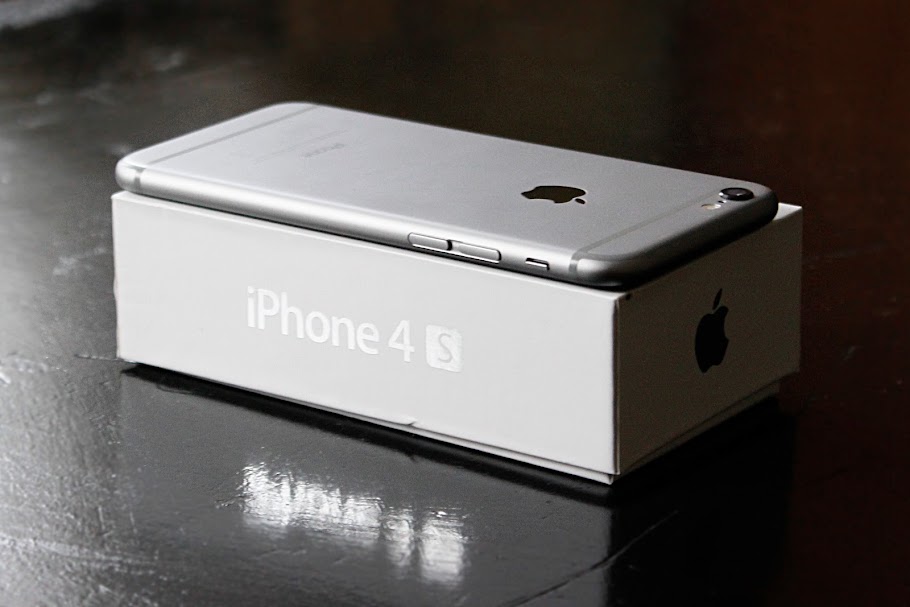As my first iPhone was quickly approaching old age (three years is probably about fifty in mobile years), it was high time to get a replacement. I still don’t like Android, mainly because of the jarring design that doesn’t look any better after going Material. And Windows Phone, while appealing, still lacks the high-quality multitude of apps I’ve come to enjoy as iOS user. The choice of ecosystem was made, but what about the hardware? Spoiled by rumors of a larger iPhone, I skipped buying the 5S and waited until the launch of the 6 line last autumn. I wasn’t overly excited about the new look of the iPhone, especially the protruding camera and the weird stripes along the back, and many shared this critique. Even so, wanting a larger iPhone left me with little choice, so, after a long wait as the constrained supplies made their way to my carrier in Romania, I purchased a ‘space grey’ iPhone 6.

Having the device up close and personal hasn’t changed my opinion of its design much. I don’t feel it’s as slippery as others complained, but it’s certainly harder to hold, especially while talking on the phone for longer periods of time. I found it complicated to type for the first few days, it seemed I could hardly reach the lower keys of the virtual keyboard without straining my thumbs. Even now, after a couple of months, I still find myself hitting the wrong keys more often than before. Typing in landscape mode is equally awkward, as some keys swap positions, breaking your habits. The smooth aluminum back feels great in the hand, but after a time it accumulates sweat and grease marks. It’s the first phone where I felt the urgent need for a case. I think it says a lot about design if the device looks and works better with a case rather than in its original form.
Four ways the new iOS 8 Landscape keyboard sucks http://t.co/e3KsI8bBjs pic.twitter.com/4iHbZtSMOQ
— Kevin Fox (@kfury) October 9, 2014Coming from an iPhone 4S, the improvements in speed and battery life are immediately noticeable. Apps load and refresh much faster, the camera is more responsive, capturing shots almost instantly. The battery usually lasts a day and a half on the cellular connection (with many background services and location turned off), something the 4S was struggling to achieve lately. There’s also Touch ID, which makes it slightly faster to unlock the device and install apps. In my experience it works almost flawlessly, there have been no more than five occasions where it insisted I should ‘try again’ because it couldn’t read my fingerprint. And, of course, the larger screen is nothing short of addictive. It’s slightly uncomfortable in the pocket and harder to use one-handed (the only times I activated Reachability it was by accident and the feature doesn’t seem an adequate solution for reaching the entire screen), but otherwise it just feels better to use a large screen for the things people usually do on a smartphone. So much so that I can’t imagine going back to a smaller screen and I’m constantly amazed at how tiny the iPhone 4 looks in the hands of my colleagues.
There are some things to be said about iOS as well, but not nearly enough to warrant a separate article. Like many of the previous releases, this one introduces more system apps that cannot be removed, a slowly creeping wave of bloatware reminiscent of software bundled with Windows. A problem especially for devices with low storage, which in many cases were unable to update because of storage requirements – it’s one of the reasons I chose to buy a 64GB device. On new iPhones, iOS 8 also bundles Apple’s sub-par office suite, another set of three apps, each occupying several hundreds of megabytes of storage. I was able to remove them, but they were reinstalled after an OS update – a weird and unfriendly decision.
A related complaint heard every so often is the diminishing quality of the Apple apps. Prior to iOS 8, I was a happy user of Podcasts; not anymore! The app freezes when I start playing episodes – curiously on some subscriptions, but not others – forcing me to hard-quit it. Since I can’t play some podcasts anymore, I was forced to find an alternative. I settled on Instacast, which is free with some in-app purchases I don’t care about, but feels less simple and intuitive than Podcasts.
While many have praised the new-found openness and extensibility of iOS 8, in practice the improvements are minor in my experience. Coming back to typing, the predictive keyboard is only available to a couple of languages (Romanian naturally not included). Which, turns out, is for the best, because I find typing on the predictive keyboard generally slower than the regular. As I type, I follow the words on the screen, so it’s easy to keep an eye on what autocorrect does at the same time. But the predictive mode forces me to constantly switch between what I’m typing and the suggestions above the keyboard, interrupting and slowing me down. I’ll probably end up turning it off altogether.
The other notable additions to this versions are sharing extensions and widgets for the Today view. While useful, custom sharing extensions need be implemented by app developers in order to work. To this day, more than half a year after the launch of iOS 8, some of the most popular apps (Instagram and WhatsApp) still haven’t added sharing sheets. Curiously, Facebook Messenger was quicker to enable this functionality, an interesting prioritization on Facebook’s part, since all three apps belong to them. Widgets on the other hand, I have yet to find a really compelling one. The only one that comes close is SkyView, showing upcoming celestial events – an innovative use of widgets that complements the app well.
Interacting with notifications from the lock screen opens up some cool possibilities. By far the most useful for me is dismissing alarms: I am usually too slow in the mornings to properly turn it off and, if the alarm snoozes, I can now remove it without unlocking the device. Deleting emails comes in handy too. Replying to messages is not that practical though: while it’s faster to type a short reply, after sending it the original message disappears and if you want to add something you still need to unlock the iPhone and open the app. A pleasant surprise in iOS 8 was the Health app, with its day-to-day statistics about number of steps and walking distance. I don’t think it’s 100% accurate, but it provides a nice incentive to keep exercising and check your progress. Overall, I’m happy with the iPhone 6, though not nearly as excited as I was three years ago, when I got my first iPhone. But the larger screen is definitely worth it!





Post a Comment